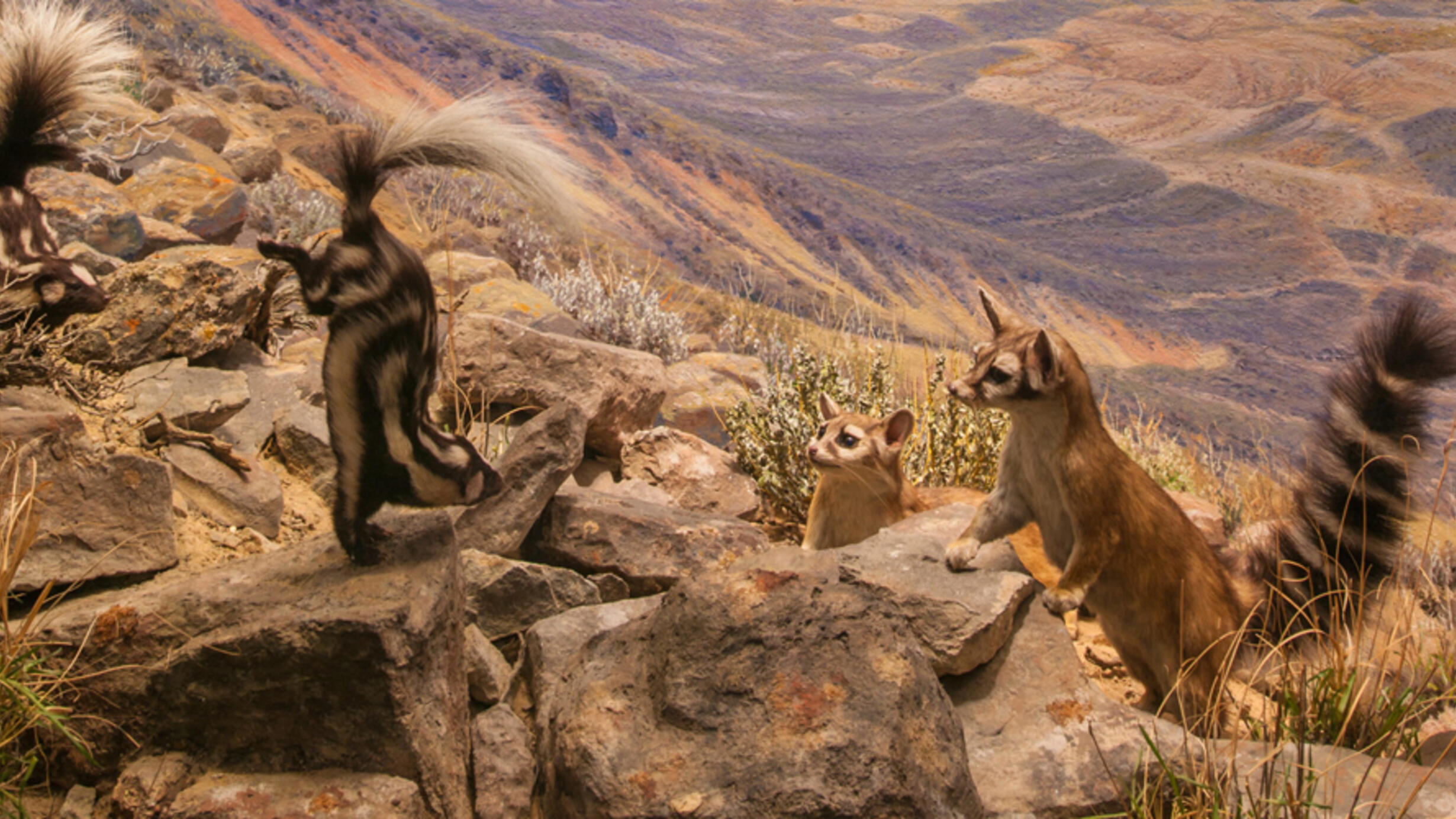Spotted Skunk and Ringtail (Cacomistle)
Part of Hall of North American Mammals.

June at Sunset, New Mexico
The remarkable handstand of the spotted skunk (left) is a warning to discourage the two curious ringtails (right) from getting any closer. If this pose doesn’t work, the skunk will release jets of foul-smelling musk from glands under its tail.
Ringtails also combine chemistry with defensive body language. Here, one ringtail has made its tail fur stand upright, creating the illusion of larger size. If the standoff escalates, the ringtail might curve its tail over its head, and—as a last resort—emit its own smelly secretion.
Small Mammals and Self-Defense
Predators as Prey
Spotted skunks and ringtails prey on animals much smaller than they are—mice and insects—but are themselves vulnerable to attack from foxes, bobcats and coyotes. Warning postures, coat colors and concealment help the small carnivores avoid some predators.